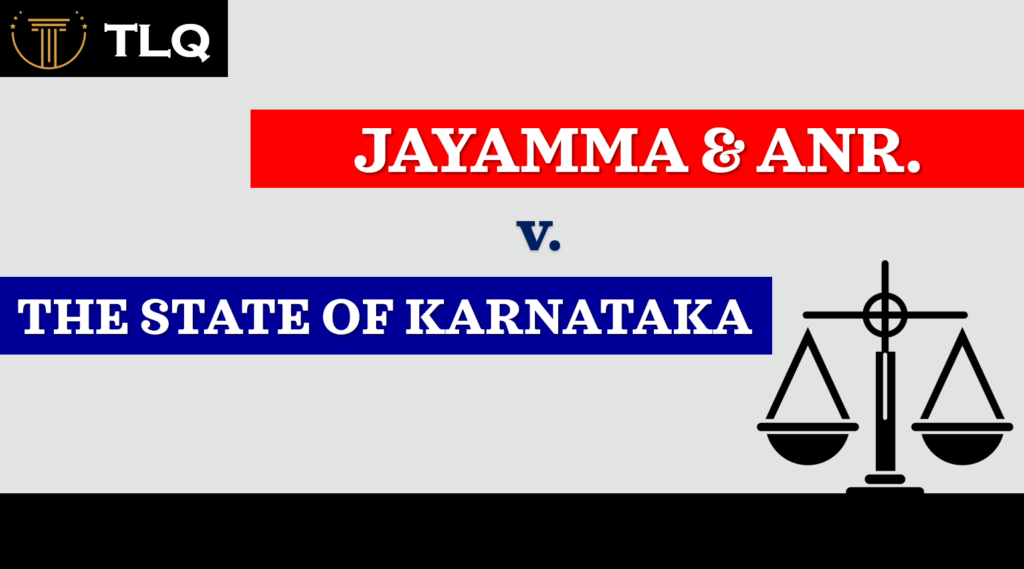Published On: 28th October, 2024
Authored By- Anurag Singh
Delhi Metropolitan Education
INTRODUCTION
The case of the State of Bihar v Kameshwar Singh is a landmark judgment in Indian legal history that intricately addressed the delicate balance between agrarian reform, social justice, and the right to property. The Supreme Court’s ruling upheld the Bihar Land Reforms Act of 1950, recognizing its fundamental role in advancing social and economic justice by redistributing land to benefit the marginalized and promote equitable land ownership. The court’s decision underscored the legislative intent behind the Act, which aimed to rectify historical injustices and improve the socioeconomic conditions of the rural populace. In its judgment, the Supreme Court navigated the complex interplay between the need for transformative land reforms and the protection of individual property rights, establishing a nuanced precedent that would guide future judicial considerations on issues of land acquisition and compensation. By affirming the Act, the Court not only reinforced the principles of agrarian justice but also set a significant legal benchmark for balancing reformative objectives with constitutional safeguards, thereby influencing subsequent legal interpretations and policies in the realm of land rights and socio-economic reforms.
FACTS OF STATE OF BIHAR V KAMESHWAR SINGH
The State of Bihar v. Kameshwar Singh case centres on the legal validity of the Bihar Land Reforms Act of 1950, which sought to dismantle the zamindari system—a land tenure arrangement where zamindars collected revenues from tenants and peasants. This Act aimed to transfer zamindari estates to the State and redistribute land to tenants and landless peasants, fitting into a broader scheme of land reform following India’s independence.
Initially, the legitimacy of the Bihar Land Reforms Act faced significant challenges. However, the introduction of the Constitution (First Amendment) Act, of 1951, which incorporated Articles 31A and 31B into the Indian Constitution, changed the legal landscape. These amendments were designed to shield agrarian reform laws from being contested based on fundamental rights violations. Despite these constitutional safeguards, opponents of the Act argued that it did not serve a public purpose and thus fell outside the protection of Article 31(4). They claimed the Act was discriminatory and lacked adequate compensation provisions, contravening Article 31(2) of the Constitution, which guarantees compensation for the acquisition of private property.
ISSUES OF THE CASES
The primary issues before the Supreme Court in State of Bihar v Kameshwar Singh were:
- Whether the Bihar Land Reforms Act, 1950, was enacted for a public purpose and hence protected by Article 31(4) of the Constitution.
- Whether the compensation provided under the Act was adequate and in compliance with Article 31(2).
- Whether the Act violated any fundamental rights guaranteed under the Constitution, particularly Article 14 (Right to Equality) and 19(1)(f) (Right to Property).
STATE OF BIHAR V KAMESHWAR SINGH JUDGEMENT
In the landmark case of State of Bihar v. Kameshwar Singh, the Supreme Court delivered a nuanced verdict on the constitutional validity of the Bihar Land Reforms Act of 1950. By a majority decision, the Court upheld the Act’s overall constitutionality, affirming that it was in line with the constitutional mandate for agrarian reform. The judgment confirmed that the provisions of the Act served a valid public purpose, a key requirement under Article 31(2) of the Indian Constitution for the acquisition of property. However, the Court’s scrutiny revealed that two specific sections of the Act were discriminatory, leading to a 3:2 majority ruling on this particular issue. Despite this finding, the Court recognized the Act’s broader intent and implementation as consistent with constitutional objectives, thus validating its role in advancing land reform while acknowledging the need for certain amendments to address the discriminatory provisions identified.
The Court in State of Bihar v. Kameshwar Singh addressed the following key points in its judgment:
PUBLIC PURPOSE
In the case of State of Bihar v. Kameshwar Singh, the Supreme Court upheld the principle that the acquisition of zamindari estates under the Bihar Land Reforms Act was pursued for a legitimate public purpose. The Court carefully examined the Act’s intent and determined that its primary objective—to abolish the zamindari system, which represented an outdated and inequitable land tenure structure—and to redistribute land directly to those who actively cultivated it, was fundamentally aligned with the principles of land reform and social justice. By targeting the removal of intermediary landholding interests, the Act sought to rectify historical inequalities and promote a more equitable distribution of land resources. The Court emphasized that such goals fit within the constitutional framework’s definition of public purpose, recognizing that these reformative objectives were essential for advancing broader societal welfare and aligning with constitutional mandates aimed at fostering social and economic equity. This affirmation underscored the Act’s alignment with the broader goals of constitutional and legislative reform, reinforcing the legitimacy of its provisions in the pursuit of greater social justice.
COMPENSATION
In State of Bihar v. Kameshwar Singh, the Supreme Court addressed the matter of compensation by asserting that Article 31(4) afforded protection to the Bihar Land Reforms Act, even if it did not fully meet the compensation requirements outlined in Article 31(2). The majority opinion emphasized that the judiciary could not scrutinize the adequacy of compensation in the context of laws specifically aimed at agrarian reform. This protection was grounded in the understanding that such laws, which are designed to achieve overarching social and economic objectives prescribed by the Constitution, were exempt from detailed judicial review concerning compensation adequacy. The Court’s stance underscored a broader acceptance that legislative measures with significant reformative intent could be shielded from judicial challenges related to compensation, provided they align with the Constitution’s goals of advancing social justice and economic equity.
DISCRIMINATION
In its landmark decision in State of Bihar v. Kameshwar Singh, the Supreme Court carefully examined the Bihar Land Reforms Act and determined that two specific sections of the Act were discriminatory. These provisions were found to treat different classes of zamindars unequally without reasonable justification, thereby violating the fundamental right to equality guaranteed under Article 14 of the Indian Constitution. This critical finding highlighted the importance of ensuring that legislative measures do not undermine the principle of equal treatment before the law. Despite this, the Court’s ruling was not solely a critique of the Act’s discriminatory aspects; it also navigated the broader context of land reforms and social justice. The judgment recognized the significant legislative intent behind the agrarian reform laws, which aimed to address historical injustices and redistribute land to benefit those who directly engaged in its cultivation. In balancing the imperative of advancing land reforms with the protection of fundamental rights, the Court provided a nuanced framework for assessing similar laws in the future. This decision established a precedent for evaluating the constitutionality of land reform initiatives, ensuring that they align with both the goals of social equity and the constitutional guarantees of individual rights.
RELATED CASES
Several other cases have addressed issues similar to those in the State of Bihar v Kameshwar Singh. Some notable cases include:
- Raja Surya Pal Singh v. State of U.P.: This case upheld the U.P. Zamindari Abolition and Land Reforms Act, 1951, reinforcing the principle that agrarian reform laws aimed at abolishing intermediary interests and redistributing land were for public purposes.
- West Bengal v. Bela Banerjee: The validity of the 1948 West Bengal Land Development and Planning Act was contested in this case. The Act was determined to constitute a public purpose and allowed for the purchase of land for refugee resettlement.
- KK Kochuni v. State of Madras: According to the ruling in this case, only agrarian reform measures were exempt from judicial review of compensation; non-agrarian laws were not. It underlined that pay must adhere to the market value norm in non-agrarian settings.
STATUE CHANGES AFTER STATE OF BIHAR V KAMESHWAR SINGH
Significant amendments have been made to the Indian Constitution’s Article 31 right to property. Article 31 formerly stated that no one may be deprived of their property unless legally permitted and that any acquisition of property for public use required payment.
Key amendments to Article 31 include:
- First Amendment (1951): Introduced Articles 31A and 31B to protect agrarian reform laws from being challenged on the grounds of violation of fundamental rights.
- Fourth Amendment (1955): Clarified that the adequacy of compensation for land acquisition could not be questioned in court. It also expanded the scope of Article 31A to cover more categories of land reform.
- Seventeenth Amendment (1964): Further extended the protection of Article 31A to cover certain ryotwari lands and included provisions for compensation at market value for some categories of land.
- Twenty-Fifth Amendment (1971): Introduced Article 31C, which provided that laws aimed at implementing certain Directive Principles of State Policy could not be challenged on the grounds of violation of fundamental rights, including the right to property.
- Forty-Fourth Amendment (1978): Repealed the right to property as a fundamental right by deleting Article 31 and introducing Article 300A, which made the right to property a constitutional right instead.
STATE OF BIHAR V KAMESHWAR SINGH CASE SUMMARY
In the seminal case of State of Bihar v. Kameshwar Singh (1952), the Supreme Court endorsed the Bihar Land Reforms Act of 1950, which sought to dismantle the zamindari system and reallocate land to tenants and peasants. The Court affirmed that the Act fulfilled a legitimate public purpose and was thus shielded under Article 31(4) of the Constitution, despite its departure from the requirement for adequate compensation. Nevertheless, the Court identified two provisions within the Act as discriminatory, violating the equality principle enshrined in Article 14. This landmark decision struck a delicate balance between advancing social justice through agrarian reform and safeguarding fundamental rights, setting a crucial precedent for future land acquisition legislation and influencing subsequent constitutional amendments related to property rights.
REFERENCES:
- “Kameshwar Prasad and Others vs. the State of Bihar and Another (1962)” https://blog.ipleaders.in/kameshwar-prasad-and-others-vs-the-state-of-bihar-and-another-1962 (accessed August,9,2024)
- Jaygjbhiye “State Of Bihar v/s. Kameshwar Singh AIR 1952 Sc 252” https://www.legalserviceindia.com/legal/article-4983-state-of-bihar-v-s-kameshwar-singh-air-1952-sc-252.html ( accessed August.9.2024)
- Kameshwar Prasad And Others vs The State Of Bihar; 1962 AIR 1166, 1962 SCR Supl. (3) 369.




